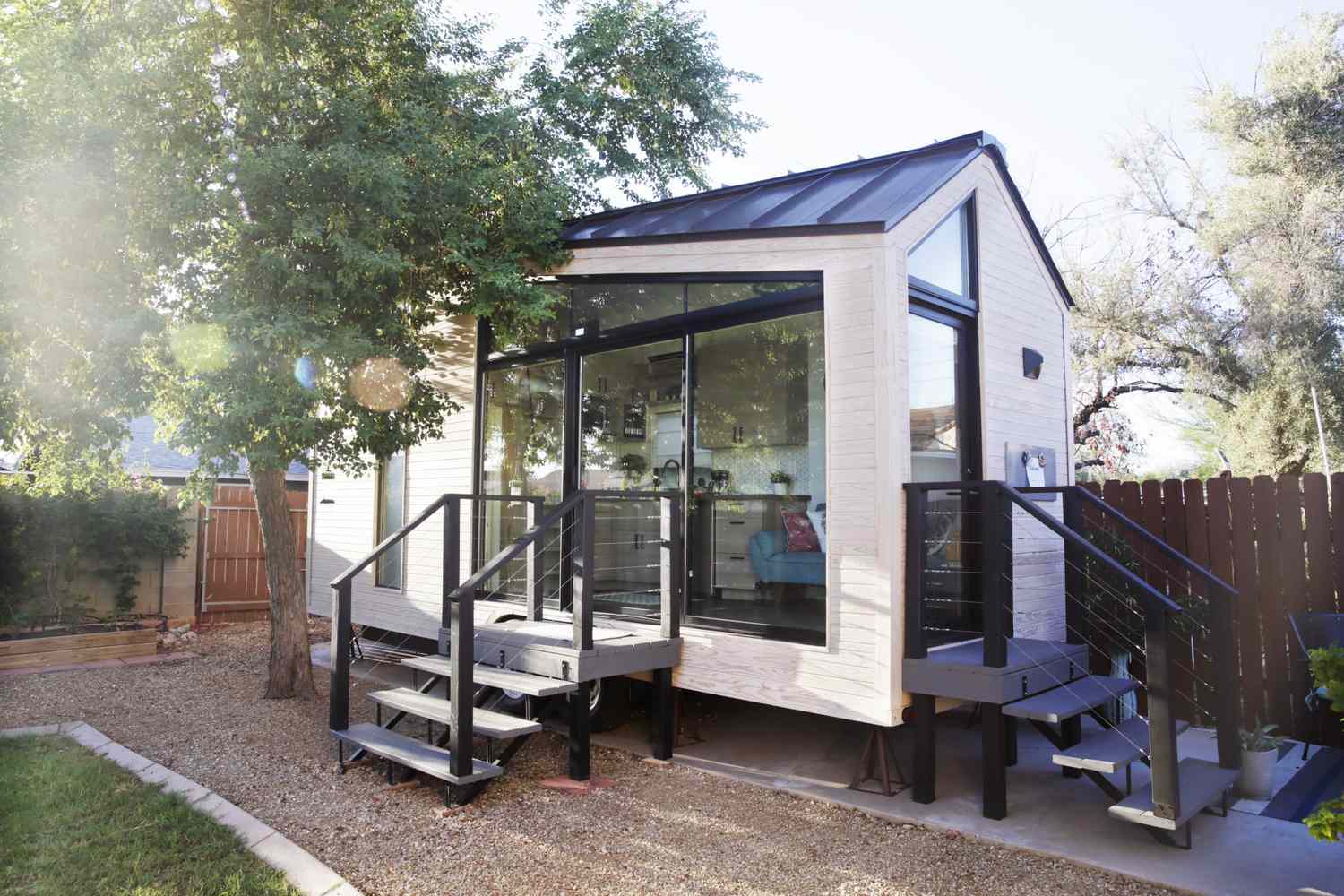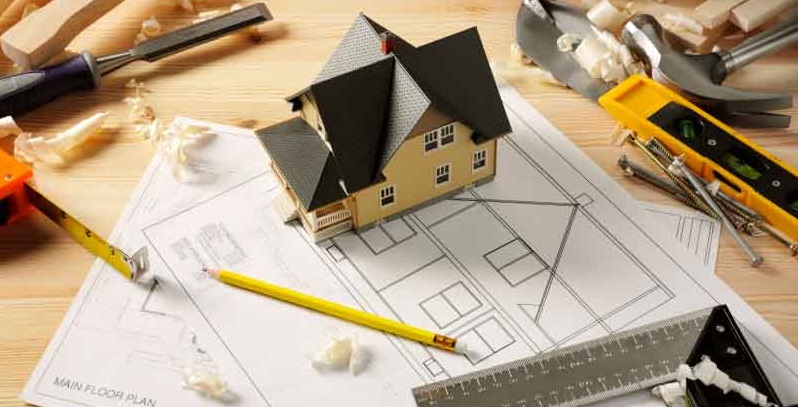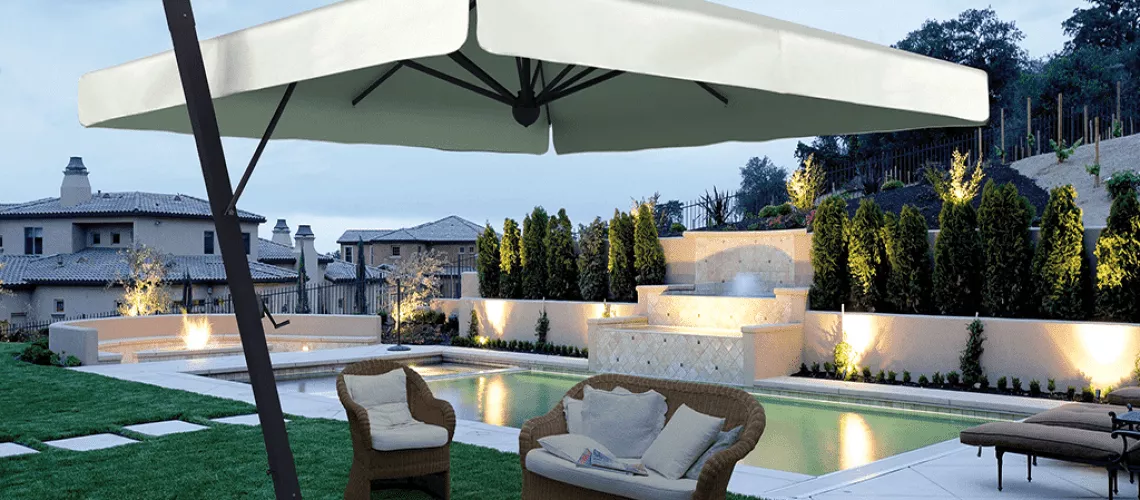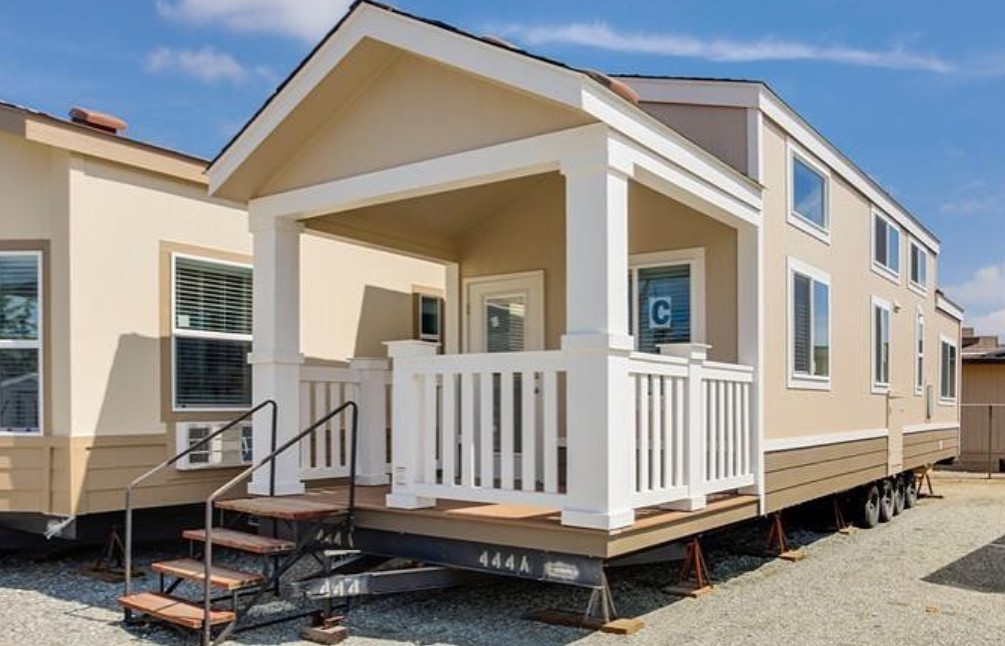Granny pods, also known as MedCottage, are a wonderful solution for providing elderly family members with a cozy and independent living space right in your backyard.
This guide will walk you through the essential steps to set up a granny pod that ensures both safety and comfort for your loved ones.
– Legal and Zoning Considerations
Before diving into the construction process, familiarize yourself with local zoning regulations and building codes. Some areas may have specific requirements for ADUs, including size limitations, setback rules, and permits. Check with your local planning department to ensure you comply with all regulations.
-
- Research Local Zoning Laws:
- Begin by researching the zoning laws and regulations in your specific area. Zoning ordinances can vary significantly between municipalities, and some may have specific guidelines for ADUs.
- Permitting Requirements:
- Check with your local building department to understand the permitting requirements for constructing a granny pod. Most jurisdictions require permits for new constructions, and ADUs are no exception.
- Setback Regulations:
- Determine the setback requirements for your property. Setbacks dictate how far structures must be from property lines, neighboring structures, and sometimes even trees or fences. Ensure your granny pod plans comply with these regulations.
- Size Limitations:
- Some areas impose restrictions on the size of ADUs. Ensure your granny pod’s dimensions adhere to the maximum allowable square footage outlined in local regulations.
- Parking Considerations:
- Certain municipalities may have parking requirements for ADUs. Understand whether you need to provide additional parking spaces for the granny pod and plan accordingly.
- Architectural and Aesthetic Standards:
- Some zoning laws include regulations regarding the architectural style and aesthetic compatibility of new structures. Ensure that your granny pod design aligns with any such guidelines.
- Historical Districts:
- If your property is located in a historical district, there may be additional restrictions to preserve the area’s historical character. Familiarize yourself with any special requirements imposed on properties in these districts.
- Environmental Impact Assessment:
- In some regions, an environmental impact assessment may be required before obtaining permits for new construction. This assessment evaluates potential environmental effects and may be necessary for compliance.
- Utility and Sewer Connections:
- Confirm whether there are any specific requirements for utility connections and sewage disposal. Ensure that your granny pod’s plans align with these regulations.
- Neighborhood Notifications:
- Some jurisdictions require notifying neighbors about your plans to construct an ADU. Be aware of any community notification or consultation processes that may be mandated.
- Homeowners Association (HOA) Rules:
- If your property falls under the jurisdiction of a homeowners association, review their rules and regulations. Some HOAs may have additional restrictions or approval processes for building ADUs.
- Consult with Professionals:
- Seek advice from professionals such as architects, contractors, or legal experts who specialize in ADU construction. They can provide valuable insights into local regulations and help ensure compliance.
- Research Local Zoning Laws:
– Design and Accessibility
When designing your granny pod, prioritize accessibility and safety. Opt for a single-story layout to avoid stairs, and include features like wider doorways and a walk-in shower for ease of mobility. Ensure that the flooring is slip-resistant, and install grab bars in the bathroom to prevent accidents.
-
- Single-Story Layout:
- Opt for a single-story design to eliminate the need for stairs. This promotes ease of mobility and reduces the risk of accidents, especially for seniors with limited mobility.
- Wider Doorways:
- Install wider doorways to accommodate mobility aids such as wheelchairs or walkers. A minimum width of 36 inches is often recommended to ensure easy passage.
- Accessible Entrance:
- Design a ramp or provide a step-free entrance to the granny pod to facilitate smooth entry for individuals with mobility challenges. Ensure that the entryway is well-lit for visibility.
- Open Floor Plan:
- Embrace an open floor plan to minimize obstacles and create a more accessible living space. This design also allows for better maneuverability within the granny pod.
- Kitchen Accessibility:
- Optimize the kitchen for accessibility by installing countertops at varying heights to accommodate both standing and seated users. Choose lever-style handles for faucets and easy-to-reach storage solutions.
- Bathroom Features:
- Design the bathroom with safety in mind. Include a walk-in shower with grab bars, a shower seat, and non-slip flooring. Install an elevated toilet with grab bars for added convenience.
- Flooring Choices:
- Select flooring materials that are slip-resistant to reduce the risk of falls. Smooth and level transitions between rooms help prevent tripping hazards.
- Proper Lighting:
- Ensure sufficient and well-distributed lighting throughout the granny pod. Consider motion-activated lights in key areas such as hallways and bathrooms to enhance safety during nighttime movements.
- Multi-Functional Furniture:
- Choose furniture that serves multiple purposes and is easy to navigate around. Avoid clutter and ensure that there is ample space for maneuvering mobility aids.
- Technology Integration:
- Integrate smart home technology for added convenience. This may include voice-activated controls for lights and thermostats, as well as emergency alert systems for quick assistance.
- Temperature Control:
- Install an efficient and easily adjustable heating and cooling system. Seniors may have specific temperature preferences, and maintaining a comfortable environment is essential for their well-being.
- Emergency Exits:
- Plan for emergency exits and ensure that they are easily accessible. Install emergency exit windows or doors with simple mechanisms for quick evacuation if necessary.
- Visual and Auditory Aids:
- Consider incorporating visual and auditory aids for individuals with impaired vision or hearing. This could include well-contrasted color schemes, bright lighting, and audible alerts for important events.
- Future-Proofing:
- Anticipate potential changes in mobility and health. Design the granny pod with features that can easily be adapted to evolving needs, such as the addition of handrails or the reconfiguration of spaces.
- Single-Story Layout:
By carefully considering these design and accessibility features, you can create a granny pod that not only meets the current needs of your elderly family member but also provides a flexible and safe environment that can adapt to their changing requirements over time.
– Privacy and Independence
-
- While proximity to the main house is convenient, it’s crucial to provide your elderly family member with a sense of privacy and independence. Plan the layout to include a separate entrance, kitchenette, and a private bathroom. Consider soundproofing measures to minimize disturbances between the main house and the granny pod.
– Safety Features
Safety should be a top priority when setting up a granny pod. Install smoke detectors, carbon monoxide detectors, and a fire extinguisher. Adequate lighting both inside and outside the pod is essential, especially for nighttime navigation. Additionally, consider installing an emergency alert system for added security.
-
- Smoke Detectors and Carbon Monoxide Alarms:
- Install smoke detectors in key areas of the granny pod, including bedrooms and common areas. Additionally, place carbon monoxide alarms near fuel-burning appliances to detect any potential leaks.
- Fire Extinguishers:
- Provide easily accessible fire extinguishers in the kitchen and other strategic locations. Ensure that residents are familiar with their operation and conduct regular checks to verify their functionality.
- Emergency Exit Plans:
- Develop and discuss emergency exit plans with your elderly family member. Ensure that windows and doors are easily operable from the inside, and practice evacuation routes to enhance preparedness.
- Adequate Lighting:
- Illuminate both the interior and exterior of the granny pod adequately. Ensure that all entrances, hallways, and outdoor pathways are well-lit to prevent accidents and provide clear visibility, especially during the night.
- Non-Slip Flooring:
- Choose flooring materials that offer good traction, reducing the risk of slips and falls. In areas like the bathroom, install non-slip mats or tiles to enhance safety.
- Grab Bars and Handrails:
- Install grab bars and handrails in critical areas such as bathrooms and hallways. These features provide essential support for balance and stability, particularly for seniors with mobility challenges.
- Accessible Shelving and Storage:
- Arrange storage areas at reachable heights to prevent the need for climbing or stretching. This minimizes the risk of falling while reaching for items.
- Medication Management:
- Implement a system for managing medications safely. Use labeled pill organizers and establish a routine for medication administration. Consider a medication reminder system if needed.
- Security Measures:
- Enhance security with features such as sturdy locks on doors and windows. Consider installing a security system or video doorbell to monitor the surroundings and provide an added layer of protection.
- Temperature Controls:
- Maintain a comfortable and safe temperature within the granny pod. Seniors are more susceptible to temperature extremes, so ensure that heating and cooling systems are reliable and controllable.
- Fall Detection Devices:
- Invest in fall detection devices that can automatically alert caregivers or emergency services if a fall occurs. These devices often come in the form of wearable pendants or integrated sensors.
- Regular Maintenance Checks:
- Schedule regular maintenance checks for safety features, appliances, and structural elements. This includes inspecting electrical systems, testing alarms, and ensuring that safety equipment is in good working condition.
- Emergency Communication System:
- Set up an emergency communication system within the granny pod. This could include a phone with emergency contacts programmed, or even a two-way communication device that allows easy contact with caregivers or emergency services.
- Accessible First Aid Kit:
- Keep a well-equipped first aid kit in an easily accessible location. Ensure that your elderly family member knows where it is located and how to use its contents in case of minor injuries.
- Smoke Detectors and Carbon Monoxide Alarms:
By incorporating these safety features into the design and daily living routines within the granny pod, you create an environment that minimizes risks and prioritizes the well-being of your loved ones. Regular communication and checks are also vital to address any evolving safety needs.
– Comfortable Living Space
Furnish the granny pod with comfort in mind. Choose furniture that is easy to navigate around and provides ample seating and storage. Ensure the heating and cooling systems are efficient and easy to control. Use light, neutral colors to create a warm and inviting atmosphere.
– Technology Integration
Incorporate technology to enhance the living experience. Install smart home devices like motion-activated lights, smart thermostats, and video doorbells for added security. Consider setting up a communication system to easily check in on your loved one.
-
- Smart Home Hub:
- Consider installing a smart home hub that serves as the central control for various connected devices. This hub can be programmed to manage lights, thermostats, and other smart devices, providing a user-friendly interface for your loved one.
- Voice-Activated Assistants:
- Integrate voice-activated assistants like Amazon Alexa or Google Assistant to allow your elderly family member to control various devices using voice commands. This can include turning on lights, adjusting the thermostat, or even making phone calls.
- Motion-Activated Lights:
- Install motion-activated lights in key areas such as hallways and bathrooms. This feature enhances safety by providing illumination when your loved one enters a room, reducing the risk of tripping or stumbling in the dark.
- Smart Thermostats:
- Opt for a smart thermostat that allows remote control and scheduling of heating and cooling systems. This ensures a comfortable living environment without the need for manual adjustments.
- Video Doorbell:
- Enhance security with a video doorbell that allows your loved one to see and communicate with visitors at the door. This feature provides an additional layer of safety, especially when they may be hesitant to answer the door in person.
- Health Monitoring Devices:
- Consider integrating health monitoring devices, such as smart scales, blood pressure monitors, or wearable fitness trackers. These devices can help caregivers or family members remotely track health metrics and detect potential issues early on.
- Emergency Alert Systems:
- Implement an emergency alert system that allows your loved one to call for help in case of an emergency. This could be a wearable pendant with a panic button or a voice-activated command to alert caregivers or emergency services.
- Home Security Systems:
- Invest in a comprehensive home security system that includes features such as door/window sensors, motion detectors, and surveillance cameras. Ensure that the system is user-friendly and can be monitored remotely.
- Smart Lighting Controls:
- Use smart lighting controls to adjust the brightness and color temperature of lights. This can create a more comfortable and customizable lighting environment for different activities and times of day.
- Remote Monitoring Cameras:
- Install remote monitoring cameras in common areas to allow family members or caregivers to check in on your loved one. Ensure privacy settings are configured appropriately, and access is restricted to authorized individuals.
- Smart Appliances:
- Consider incorporating smart appliances into the kitchen and other areas. These could include smart refrigerators, ovens, and even voice-activated coffee makers, making daily tasks more convenient.
- Fall Detection Devices:
- Utilize fall detection devices that automatically alert caregivers or emergency services if a fall is detected. These devices can be integrated into wearable accessories or placed in key areas of the living space.
- Remote Communication Tools:
- Set up easy-to-use communication tools, such as video calling applications or dedicated communication devices. This ensures that your loved one can stay connected with family and friends, reducing feelings of isolation.
- Digital Reminders and Schedules:
- Use digital calendars and reminder apps to help your loved one keep track of appointments, medication schedules, and daily activities. These tools can provide gentle reminders and alleviate cognitive load.
- Smart Home Hub:
By thoughtfully integrating technology into the granny pod, you can create a living space that not only prioritizes safety but also enhances convenience and connectivity for your elderly family member. Regularly update and adapt these technologies to meet evolving needs and advancements in the field.
– Landscaping and Outdoor Space
Create a pleasant outdoor environment around the granny pod. Consider accessible pathways, well-maintained landscaping, and outdoor seating areas. This not only adds aesthetic value but also provides a serene space for relaxation.
– Regular Maintenance and Check-Ins
Once the granny pod is set up, establish a routine for regular maintenance and check-ins. Ensure that appliances, safety features, and living conditions are regularly inspected. Regular visits and communication will also help maintain a strong connection with your elderly family member.
Setting up a granny pod involves careful planning, attention to detail, and a focus on the well-being of your loved one. By combining comfort, safety, and independence, you can create a harmonious living space that fosters a sense of home and security for your elderly family member.




